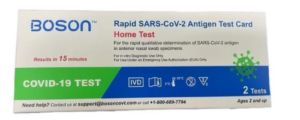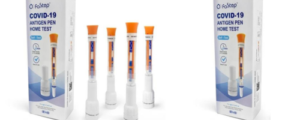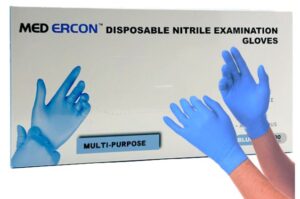Benzodiazepines

What Are Benzodiazepines?
Benzodiazepines are central nervous system depressants. They are among the most commonly prescribed in the U.S. today. There are over 15 types of benzodiazepine medications on the market, available to treat a wide range of physical and psychological maladies.
Benzodiazepines are anxiolytic (anti-anxiety), antispasmodic (muscle relaxant), anticonvulsant (prevents epileptic seizures) and sedative-hypnotic (sleep-inducing).
The most popularly prescribed benzodiazepines include Valium© (diazepam), Xanax© (alprazolam), Ativan© (lorazepam), and Librium© (chlordiazepoxide). Though not legally prescribed, the benzodiazepine Rohypnol© (flunitrazepam) is well known for its notorious reputation as a date-rape drug.
Physiology
The human brain has a key neurotransmitter called gamma-aminobutyric acid (GABA). This GABA inhibits motor neurons, so if there is a GABA present, neuronal activity slows down or stops altogether. Benzodiazepines enhance GABA activity, effectively slowing nerve impulses throughout the body.
While dosage and absorption time vary among the different benzodiazepines, they all trigger the same physical effects. There are short-acting and long-acting benzodiazepines. A physician will choose either of the types (short-acting or long-acting) depending on what condition it is being prescribed for.
History of Benzodiazepines
Austrian chemist Dr. Leo Sternbach first discovered benzodiazepine in 1954 while working for Hoffman-La Roche. The drug was submitted for pharmacological evaluation where it was determined that it is superior to other related drugs. The first benzodiazepine was patented in 1959 (patent application 1958), and it was finally introduced into the market in 1960 as Librium (chlordiazepoxide).
Hoffman-La Roche continued pursuing molecular modifications and came out with Valium (diazepam) in 1963. Diazepam was shown to be 3x more powerful than chlordiazepoxide, with greater muscle relaxant properties. Hoffman-La Roche competitors also began looking for analogs.
In the early days, benzodiazepines appeared less likely to lead to dependence, particularly because compared to barbiturates, they did not cause respiratory depression. The medical community accepted benzodiazepines enthusiastically, resulting in its popularity and high demand from patients.
Other derivatives of the drug soon came out, including Mogadon (nitrazepam) in 1965, Dalmane (flurazepam) in 1973, and Xanax (alprazolam) in the 1980s. By the mid-1970s, over 8000 tons of benzodiazepine medications were being sold every year.
It took a while for the realities of benzodiazepine to come to light, as researchers finally made the connection to GABA. By then glimpses of abuse and dependence have started to become evident. Soon, more guidelines (and legislation) were being published as to its use (and misuse). Of higher concern was the effect of benzodiazepines on elderly patients for their heightened sensitivity to its side effects.
Benzodiazepine Cases and Fatalities
Screening Cut-Off and Detection Time
In drug testing, the cut-off level separates a negative and a positive test result. The cut-off levels are set at that point where drug detection happens with the smallest probability for false positives. It is imperative to note that a negative sample does not automatically mean that it does not contain any drug – it only indicates that it may contain a drug at such a low concentration that it is below the established cut-off.
Specimen Concentration Detection Time
- Urine Drug Test 300 ng/ml 3-7 days
- Saliva Drug Test 50 ng/ml Up to 48 hours
- Hair Follicle Drug Test 100 pg/mg Up to 90 daysBenzodiazepine Drug Type
Benzodiazepine is a depressant. Depressants slow down the activity of the central nervous system. These drugs are also called downers for the “relaxation” induce. Depressants relieve stress and anger and often cause drowsiness or sleepiness.
Depressants include the following:
- Alcohol
- Barbiturates
- Benzodiazepines
- Rohypnol (flunitrazepam)
- GHB
- Methaqualone
- Tranquilizers
Forms and Routes of Administration
Benzodiazepines come in the following forms and administered accordingly:
Oral – These drugs most commonly come in the form of tablets or capsules for oral administration.
Injection – They also come in liquid form (Valium, Ativan, Librium) to be injected either intramuscularly or intravenously. Versed© (midazolam) is made exclusively as IV.
Sublingual – Ativan comes in 0.5mg, 1mg, and 2mg sublingual tablets to be dissolved under the tongue.
Benzodiazepines Forms of Administration
DEA Drug Class
Benzodiazepine is controlled under Schedule IV of the Controlled Substances Act. Schedule IV lists drugs, substances, or chemicals that:
- have a low potential for abuse compared to Schedule III drugs;
- have a currently accepted medical use in treatment in the U.S.;
- may lead to limited psychological or physical dependence compared to Schedule III drugs.
Other Schedule IV drugs include:
- Acetaminophen/Tramadol
- Ativan (lorazepam)
- Ionamin (phentermine)
- Librium
- Naloxone/Pentazocine
- Tramadol
- Valium (diazepam)
- Xanax (alprazolam)
- Brand Names for Benzodiazepine
- Ativan (lorazepam)
- Halcion (triazolam)
- Klonopin (clonazepam)
- Librium (chlordiazepoxide)
- Onfi (clobazam)
- Restoril (temazepam)
- Tranxene, Tranxene SD (clorazepate)
- Valium, Diastat Acudial, Diastat (diazepam)
- Xanax, Xanax XR (alprazolam)
- Street Names for Benzodiazepines
- Benzos
- BZDs
- Candy
- Dead Flower Powers
- Goofballs
- Heavenly Blues
- Moggies
- Qual
- School Bus
- Sleepers
- Stupefy
- Tranx
- Valley Girl
- Z Bars
Use of Benzodiazepine
- Medical/Therapeutic Uses for Benzodiazepine
- Treatment of anxiety disorders
- Management of convulsive disorders
- Treatment of insomnia, night terrors, and other sleep disorders
- Treatment of mild or moderate depression and mood disorders
- Treatment of involuntary movement disorders like restless leg syndrome, dystonia, and dyskinesia
- Treatment of symptoms of withdrawal from alcohol and other substances like delirium, anxiety, hyperpyrexia, and seizures.
Recreational Uses for Benzodiazepine
Non-medical use of benzos often begins when people feel worried or anxious and want to be able to relax. They swipe a pill or two from a family member’s prescription left lying around in the house, thinking it would be harmless to use it just that one time. The next time they are stressed, they will simply take another pill to get through the moment of anxiety. Some people use them every other time they have difficulty sleeping until it becomes a habit. A more sinister non-medical use of benzos is for preying on unsuspecting victims, as is the case for Rohypnol (flunitrazepam), notoriously known for being a date-rape drug.
Short-Term Benzodiazepines Side Effects
Short-term side effects vary depending on the dose. At low to moderate doses, a user may experience the following side effects:
- Abdominal discomfort
- Altered vision
- Confusion
- Constipation
- Depression
- Diarrhea
- Drowsiness, lethargy, fatigue
- Dry mouth
- Impaired motor coordination
- Impaired thinking and memory
- Loss of appetite
- Nausea/vomiting
- Respiratory depression
- Slurred speech, stuttering
- Tremors
- Vertigo
At much higher doses, extreme drowsiness occurs and on top of the low-dose side effects, users may also experience the following:
- Euphoria
- Hostile and erratic behavior
- Mood swings
- Slowed reflexes
- Long-Term Benzodiazepines Side Effects
Each of the different kinds of benzo meds gets eliminated from the body at varying rates. Some take a while so taking multiple doses over long periods can cause them to accumulate in the fatty tissues. This leads to a condition called over-sedation, the symptoms of which do not manifest right away, taking at least a few days.
- Confusion
- Disorientation
- Impaired thinking
- Impaired memory
- Impaired judgment
- Muscle weakness, lack of coordination
- Slurred speech
- Benzodiazepine Addiction
- Drug Addiction
Physiological and psychological dependence can result from benzodiazepine misuse depending on the drug’s potency, its dosage, and the length of time it is taken. For example, alprazolam is highly potent and if taken at high doses, dependence can develop in as short as 2 months. With certain other benzos, tolerance occurs at around 6 months of use.
Tolerance to the hypnotic effects of benzodiazepine appears to happen the soonest. It often occurs in as little as a few days of regular use. Tolerance to the drug’s anti-anxiety properties happens at a much slower pace, about a few months. As the effectiveness wears off, the user simply increases the dose just to get the same effect as before. It becomes harder for the user to stop using the drug once tolerance has set in because they start to experience withdrawal symptoms. This is called physiological or physical dependence.
Following is a list of benzodiazepine withdrawal symptoms:
- Detachment from reality
- Distorted perceptions/Altered sensations
- Impaired sense of movement
- Depersonalization
- Visual and auditory hallucinations
- Distorted body image
- Tingling/numbness
- Skin ‘crawling’
- Hypersensitivity to light, sound, taste, and smell
- Muscle twitches/jerks
- Tinnitus
- Psychosis (occurs from abrupt withdrawal from high doses)
- Confusion/delirium (occurs from abrupt withdrawal from high doses)
- Convulsions (occurs from abrupt withdrawal from high doses)
Benzodiazepine Facts and Statistics
- Medical prescriptions are the primary source of benzo abusers.
- In 2010, the American Association of Poison Control Centers reported 81,427 cases of benzodiazepine overdose, 31,255 of which are single exposures, and 11 fatalities were connected with a benzodiazepine.
- In 2010, an estimated 345,691 ER visits were attributed to benzodiazepines.
A 2011 National Survey for Drug Use and Health (NSDUH) reported that an estimated 20.4 million people 12 years and older have misused benzodiazepines in their lifetime. - Benzodiazepine abuse is higher in men than in women (McCabe, 2005).
- Benzodiazepine abuse is higher among alcoholics (Vorma et al., 2005).
- The most common drugs used in combination with benzos are opiates like heroin. This is because the benzodiazepine reduces their cravings and/or withdrawal symptoms between highs.
- Benzodiazepine is only shown as a primary drug of abuse in 12.9% of cases, but it is a secondary drug of abuse in 82.1% of cases.
- Alprazolam (Xanax) is the most common benzodiazepine used for non-medical purposes.
Can I Purchase a Single Use Drug Test for Benzodiazepine?
12 Panel Now offers Drug Tests in Bulk, or for single use. If you are concerned about how someone will fare on a Drug Test, or simply wish to test yourself, it’s a fairly easy process taking only a few minutes. Our Single Use 12 Panel Urine Drug Test tests for 12 commonly abused drugs, including Benzodiazepine.
After the donor seals the urine in the leak-proof container, it is then handed off to the evaluator. What makes the process streamlined is that the strips used to indicate the test results are sealed within the container. For hygiene reasons, this is ideal. When it is time to view the test results, the evaluator simply peels away the outside label revealing the drug test strips with each individual result.
The test results within the Drug Test will show results within a few minutes. Results should be evaluated within 5-8 minutes. Results should not be evaluated after 1o minutes.
The 12 Panel Drug Testing Kits are designed to detect 12 of the most abused and commonly used drugs. However, depending on your needs, you can purchase other kits that test for different drugs. For instance, the 13 Panel Drug Testing Cup includes all the same drugs tested within a 12 Panel Drug Test with the drug Fentanyl (FYL) drug. There are also variants of the typical 12 Panel Drug Test that include drugs like phencyclidine, or PCP.
If you have any questions or concerns regarding our product or wish to place an order, feel free to call us at (888) 936-6627
What Type of Drug Is Benzodiazepine?
Benzodiazepines are central nervous system depressants.
They are among the most commonly prescribed in the U.S. today.
Additionally, there are over 15 types of benzodiazepines for treating a wide range of physical and psychological disorders.
How Long Do Benzodiazepines Last in Urine?
A benzodiazepine urine drug test can detect it at 300 ng/ml within 3-7 days.
What Are Benzodiazepines Prescribed For?
Doctors prescribe Benzo for helping people cope with insomnia, depressions, and anxiety. However, some people use it illictily for recreational purposes.
Is Gabapentin a Benzodiazepine?
No, it’s not. It is, however, used for the treatment of benzodiazepine dependence.
Are Benzodiazepines Addictive?
Yes, they are addictive. In fact, they’re listed as Schedule IV drugs in the US.
Are Benzodiazepines Opiates?
No, they’re not.
Benzodiazepines are sedatives. They help people who are struggling with anxiety, panic disorders, and depression.
Opioids, on the other hand, are prescribed to help people cope with pain.
Both, however, are addictive.
Do Benzodiazepines Show up on Drug Tests?
Yes, drug tests can detect BZO. You can use multi-panel cups, dip cards, or benzodiazepine strips for this purpose.
Do Pre-employment Drug Tests Test for Benzodiazepines?
It depends on the company you are applying to. Most private employers can test for any combination of drugs. BZO is typically included in their drug tests.
Read more here: Workplace Drug Testing
Can Drug Test Tell Difference Between Benzodiazepines?
No, it can’t. To clarify, a standard urine drug test cannot detect the medications listed below.
- Alprazolam (Xanax)
- Clonazepam (Klonopin)
- Temazepam (Restoril
- Ttriazolam (Halcion)
What over the Counter Drugs Will Test Positive for Benzodiazepines?
Sertraline is an over-the-counter medication that may cause a false positive in a BZO drug test.
Is Clonazepam a Benzodiazepine?
Yes, clonazepam is a benzodiazepine. It’s sold under the name Klonopin.
Additionally, the effect that benzodiazepines have on those who are prescribed it may vary.




























